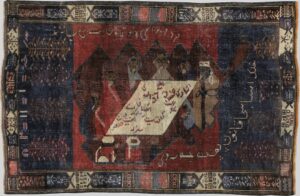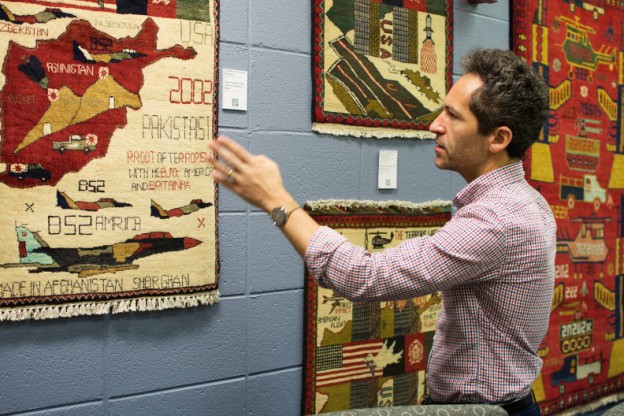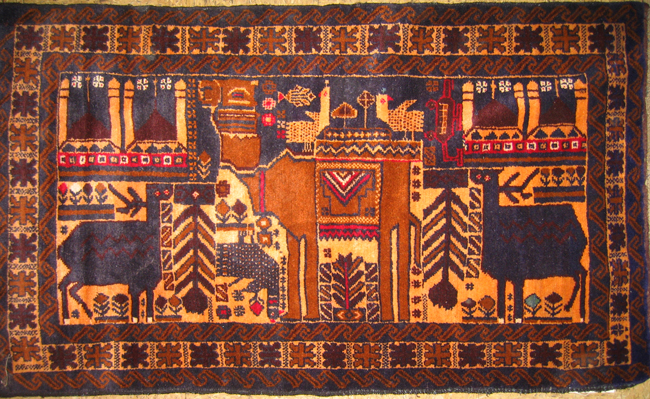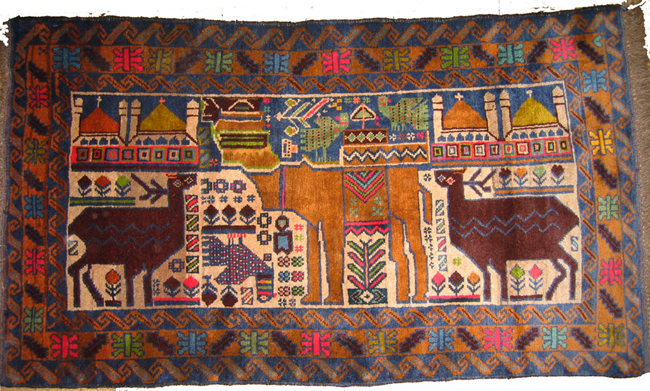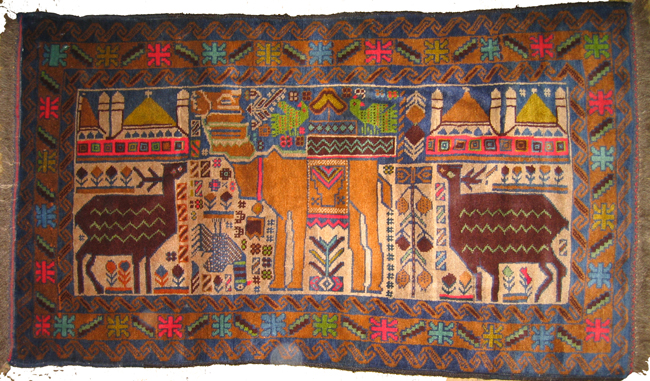Here is a rug of a rare and important design. It shows the forging of the Afghan constitution during the country’s democratic moment It is for sale by friend, so contact me for the details.
Category Archives: The Weavers
19th Century Daghestani Prayer Rug for Sale
This is not the focus of Warrug.com, but twenty years ago we picked up this rug, and now it is time to downsize.
The details are in the link: Rug #2122, Antique Daghestan Prayer Rug. The price is $3,500, so contact us if you are interested in purchase, and we will send a PayPal invoice.
The design of this rug is not typical of the type, and the pattern conveys a special sensibility. The figure, represented by the pattern inside the mihrab, is the same as the world, represented by the same lattice pattern outside the mihrab. The part that is different is where the prayers go up from the figure, and the lattice breaks down to series of small dreamy motifs.
TCNJ’s ‘Art Amongst War’ Exhibition featured in Sunday New York Times
Today’s New York Times Metropolitan section has a story by Tammy La Gorce about the show ‘Art Amongst War’ at The College of New Jersey’s Art Gallery. The show is curated by Deborah Hutton, and it features an array of art made by Afghan artists including 5 war rugs loaned by warrug.com, including the one in Times’ story. The show includes fine paintings, beautiful needlework, historical and contemporary video, installation art and some beautiful and haunting photographs.
“The anonymous weavers of six 1980s and 1990s-era “war rugs” — carpets whose motifs include land mines, guns and soldiers — may have had no formal training, learning from their relatives, but they have incorporated the grim realities of life in a war zone into their traditional craft.”
Where Are the Red Rugs?
I received an excellent question from our contact form recently about the lack of Red Rugs available for purchase on warrug.com lately. Below is was my response:
Your question about Red Rugs is a good one. Red Rugs were woven by refugees, primarily Turkmen, in Pakistan during the 1990’s. Since the US forced the Taliban from power in 2001 Turkmen refugees have been returning en masse to their traditional homes in Afghanistan, largely because ISAF offers them sufficient protection from the Taliban ethnic cleansing which drove many families to Pakistan during the 1990’s.
The effects of the Turkmen weavers returning to their homes in Afghanistan is, primarily, two fold. First, as refugees, if one was an engineer, one wove carpets. If one was a doctor, one wove carpets. Now the doctors and engineers are returning to their professions, so there are less weavers available to weave any type of rug. Secondly, many Turkmen weavers who wove Red Rugs in Pakistan are now weaving traditional designs or new variations of traditional designs (Khul Mohammadi mostly).
Much of the Pakistan production has moved to Afghanistan (Khul Mohammadi, Kazak, Vegetable Dye ‘Peshawar’) with the returning weavers, but not Red Rugs. I have not seen any Red Rugs produced in Afghanistan since 2001. In short, there is no more supply of Red Rugs. Occasionally I find a few Red Rugs and I post them, but they are scarce.
Lastly, this elimination of a design is not unique to Red Rugs, yet it continues to surprise me. Almost every war rug “pattern” has its moment of production, which then fades or stops. What is freely available one year, is totally unavailable the next year. Soviet Exodus rugs are one example and WTC rugs to a lesser degree.
Again, thank you for your question. Please write back if you have any further questions or comments.
The Camel’s Back
Two by Two
Here are four rugs woven by two weavers of one pattern. The two pairs have distinctly different structures and materials, but each pair’s material, color, drawing, border, handle, knotting, and selvedge is consistent. Note inverted red helicopter in Camel 1.
Interestingly, in Murray Eiland’s Oriental Rugs, 1976 edition, on page 83 is a rug of this design attributed Shindand, mid twentieth century.
Camel 1
Camel 2
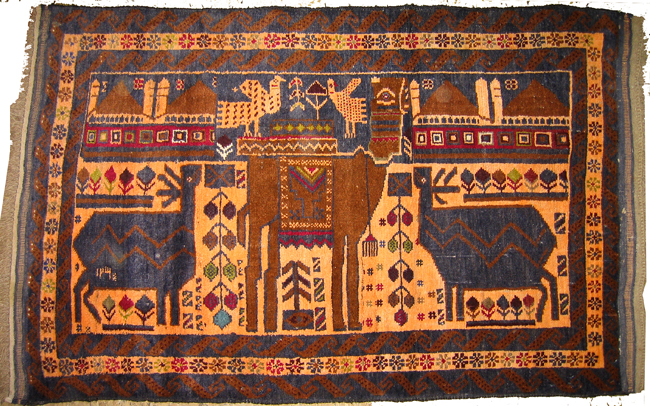
Camel 3
Camel 4
Red Rug Sub-Groups
Warrug.com’s selection of small red rugs illustrates sub groups of red rugs well.
‘Classic Red Rug
‘
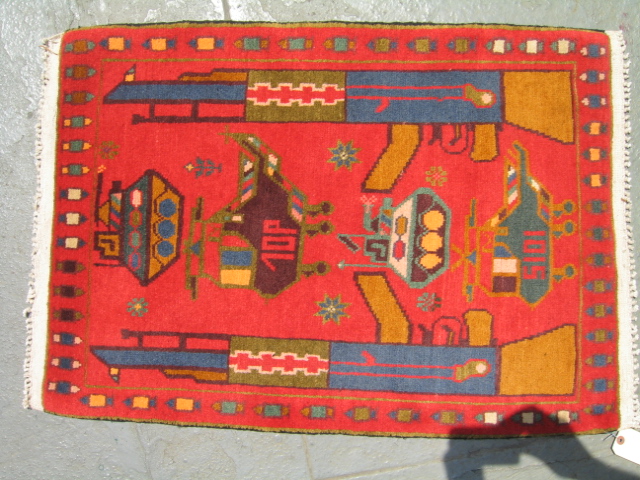
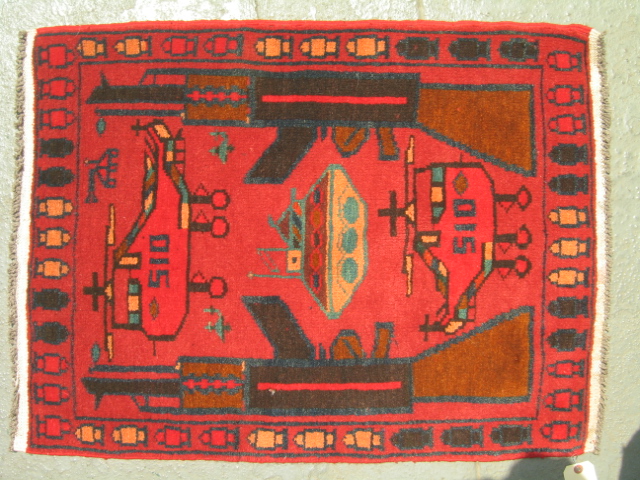
“[not] Vegetable Dye”
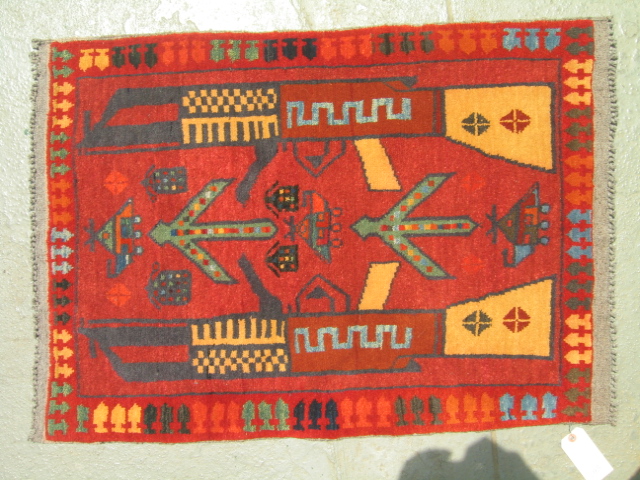
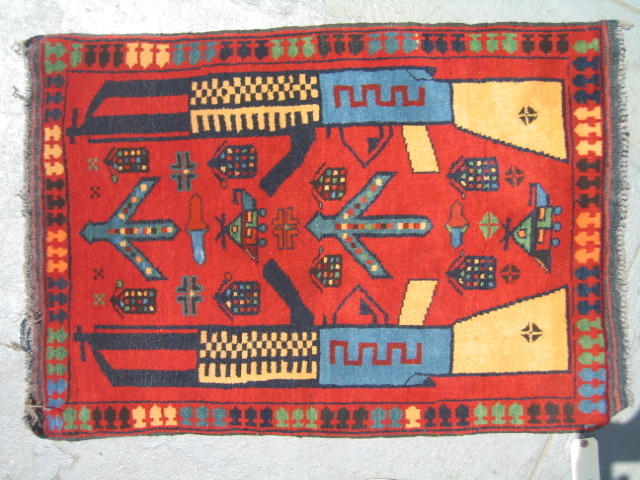
Modern [true] Vegetable Dye
‘Five Genades’ (random name but most popular style)
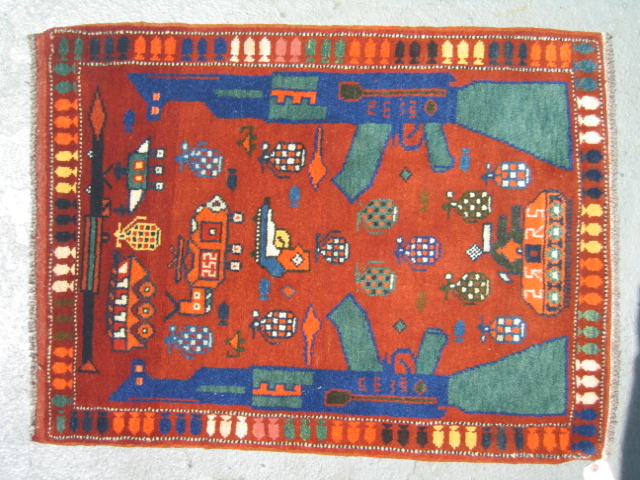
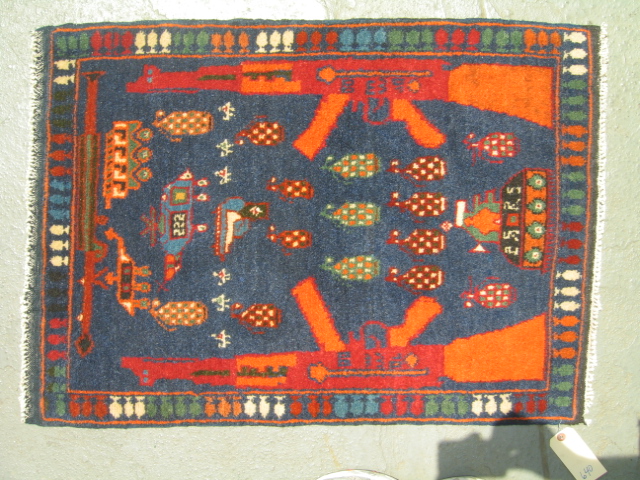
‘Squashed Helicopter’ Style’
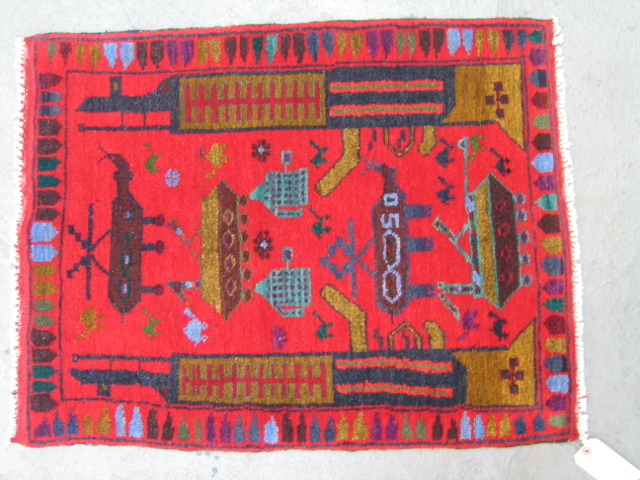
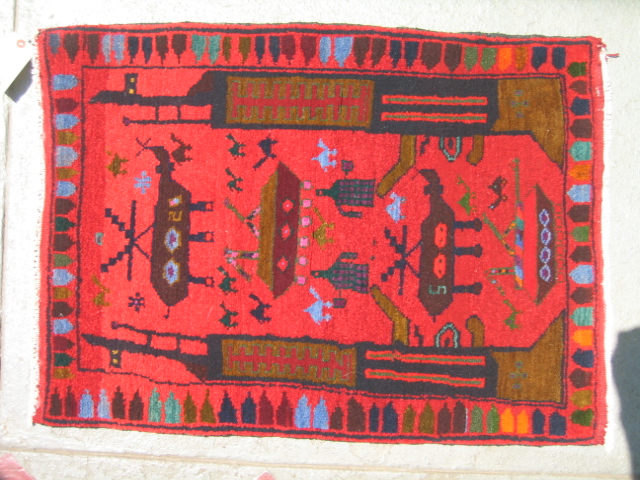
‘Camoflage Helicopter’ named for harlequin-esque rendering on helicopters. These were readil available in 1999 and 2000. They are like “Classic” red rugs, but not quite as finely knotted.
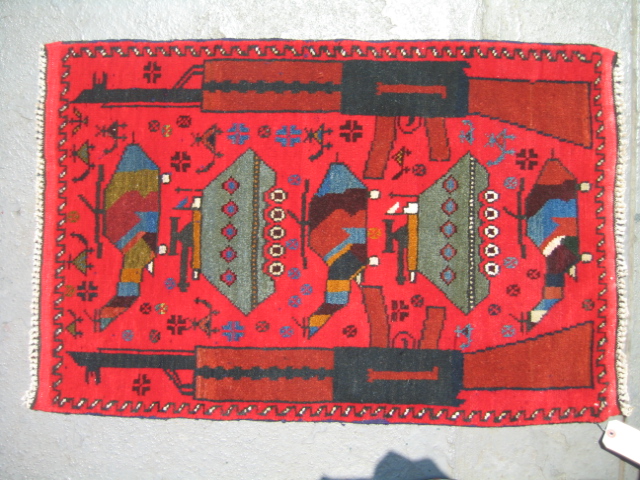
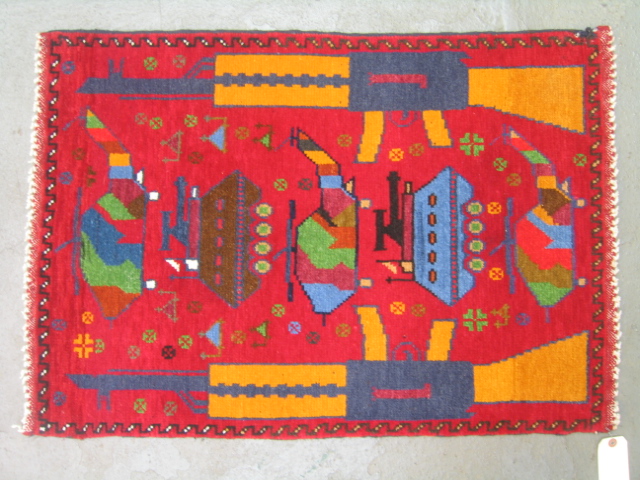
“Fat RPG’s” (for lack of a better name)
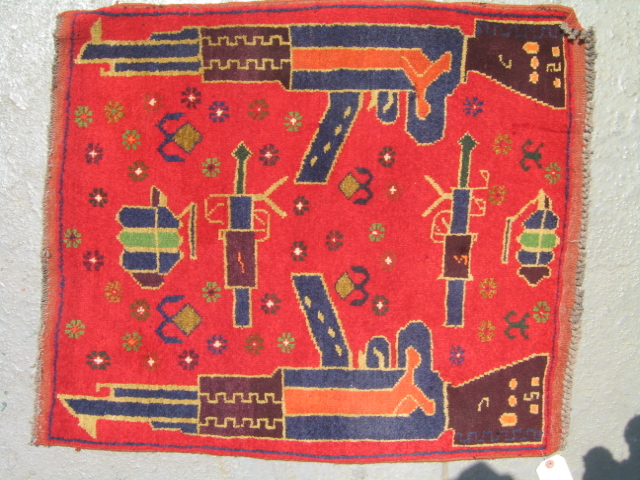
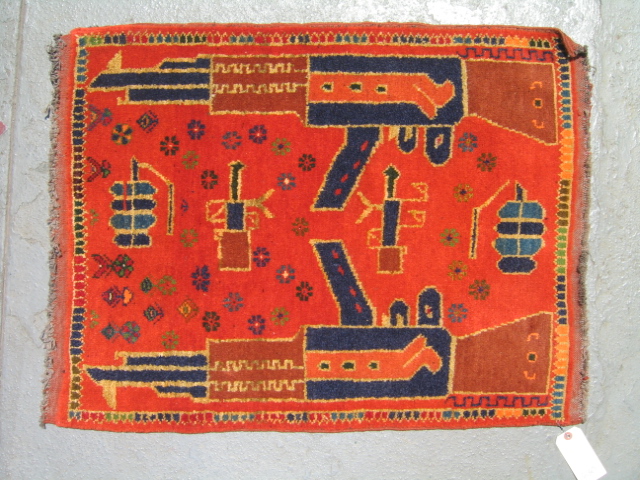
Call for Essays
Warrug is looking for essays for its series of upcoming publications. Please contact warrug.com with ideas if you are interested.
-Kevin
Behind the Purdah
Joanne Warfield’s photographs of Afghanistan are beautiful, and this group is important.
I asked permission to take photographs, which was kindly granted to me. I knew at the time that this was a unique and special honor.
[…]
so this incredible opportunity to photograph the tailor’s family was a very special one indeed. And, little did I know at the time what a rare event it really was.

Kevin Kelly Photos
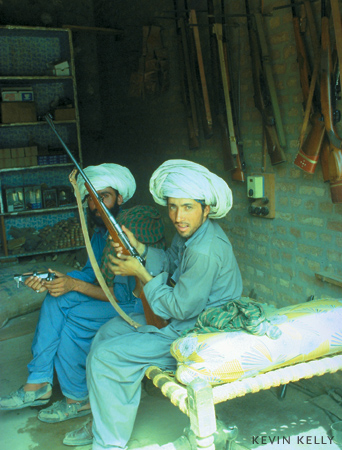
The whole portfolio is worth viewing. His book”
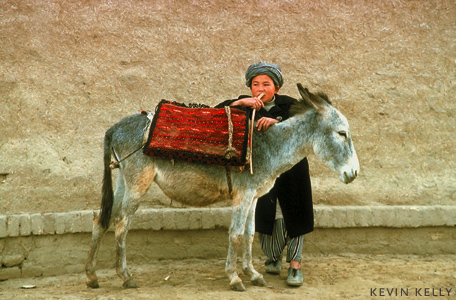
Boy with Khourjin
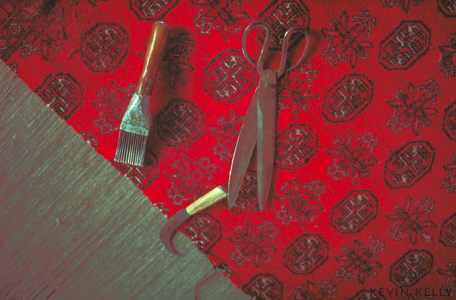
Link
The tools for carpet weaving are simple and few. There’s the loom, in a horizontal position. The weaver squats on the finished carpet as she weaves. She ties new knots of dyed yarn along the edge. She trims the tied knot with the curved knife. Then she tightens the finished row of knots with the long-handled comb. Then, she further trims the area she just finished with the scissors, maintaining an even pile on the whole carpet.
